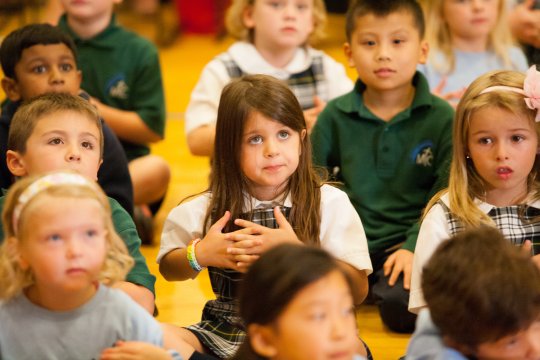Unit 6: Lesson 11
Select Topic & Brainstorm Personal Narrative
Unit 6: Lesson 11
Select Topic & Brainstorm Personal Narrative

LITERACY OBJECTIVE
By the end of this lesson students will be able to develop an outline for a personal narrative.
Literacy "I Can" Statements
"I can develop an outline for my personal narrative."
Lesson Overview
| Steps | Pacing: 60-90 Minutes |
|---|---|
| 15 Minutes | |
| Step 3: Develop Story Outline through a Theater Exercise-Walking Stories | 30 Minutes |
| 15 Minutes |
Standards Alignment
Targeted CCSS
Secondary CCSS
TEACHING RESOURCES
Classroom Charts
A4L Student Notebooks
Life & Learning Skills
 Differentiation Options
Differentiation Options
![]() Leveraging Moments
Leveraging Moments
STEP 1: INTRODUCE LESSON 11
Process: Begin the lesson by walking through the Unit Overview for Students. to review progress thus far. Give an overview of the lesson objectives. Select a topic for a personal narrative and engage in a theater exercise to brainstorm the story; co-construct a personal narrative rubric.
Suggested Dialogue
Beginning the Writing Process
STEP 2: SELECT TOPIC FOR WRITING
Process: Guide students to review their brainstorms for the three topics explored in the unit by looking back through the brainstorming and writing they have done in their A4L Writer's Notebooks. Students select one topic and, within that topic, the one memory they want to write a full story about. This does not need to be the same memory they worked with earlier in the unit. Students should turn to page 29 in their A4L Writer's Notebooks, circle their topic, and record their memory. Tell students they will come back to brainstorm their story after they do the theater exercise Walking Stories.
STEP 3: DEVELOP STORY OUTLINE THROUGH A THEATER EXERCISE-WALKING STORIES
The Walking Stories Exercise
Step Alternatives: Mini-Lesson on Transitions
Teaching Tip: Prompts for 3rd Round of Story Walk
Suggested Dialogue
Introducing the Exercise
Transitioning to a Starting Place
Facilitating the Exercise
Taking Notes in Story Outline
Facilitating Students Walking and Story-telling
Facilitating Pair-Sharing Reflection
Transitioning to Desks
STEP 4: REVIEW & FINALIZE PERSONAL NARRATIVE RUBRIC
Process: Review the rubric created throughout the unit. Discuss the criteria and whether anything should be added or changed to reflect what students know about writing good personal narratives. Add in an "editing" section and tell students they will refer to this section after drafting and revising.
Incoporate additional criteria, such as sentence fluency or grammar, as appropriate. See sample Personal Narrative Rubric. Post the final rubric on wall as a reference and/or make a copy for each student.
Suggested Dialogue
Reviewing What We Learned
STEP 5: CLOSE LESSON 11
Process: Students return to their story outline and circle one word that represents the story they will write. Close the lesson with a Word Whip. Select a facilitation and variation option. Close lesson with a look forward describing the next lesson and an optional closing ritual.
Teaching Tip: Word Whip Facilitation & Variation Options
Suggested Dialogue
Closing with a Word Whip
Looking Forward
Performing the Closing Ritual (Optional)
CONGRATULATIONS ON COMPLETING LESSON 11! YOU ARE NOW READY TO MOVE ONTO LESSON 12 OF UNIT 6.
You've now reached the end of our ArtsforLearning Curriculum preview.



